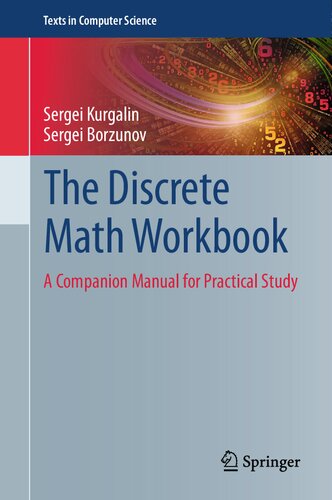

Most ebook files are in PDF format, so you can easily read them using various software such as Foxit Reader or directly on the Google Chrome browser.
Some ebook files are released by publishers in other formats such as .awz, .mobi, .epub, .fb2, etc. You may need to install specific software to read these formats on mobile/PC, such as Calibre.
Please read the tutorial at this link. https://ebooknice.com/page/post?id=faq
We offer FREE conversion to the popular formats you request; however, this may take some time. Therefore, right after payment, please email us, and we will try to provide the service as quickly as possible.
For some exceptional file formats or broken links (if any), please refrain from opening any disputes. Instead, email us first, and we will try to assist within a maximum of 6 hours.
EbookNice Team

Status:
Available4.4
40 reviewsThis practically-oriented textbook presents an accessible introduction to discrete mathematics through a substantial collection of classroom-tested exercises. Each chapter opens with concise coverage of the theory underlying the topic, reviewing the basic concepts and establishing the terminology, as well as providing the key formulae and instructions on their use. This is then followed by a detailed account of the most common problems in the area, before the reader is invited to practice solving such problems for themselves through a varied series of questions and assignments.
Topics and features: provides an extensive set of exercises and examples of varying levels of complexity, suitable for both laboratory practical training and self-study; offers detailed solutions to many problems, applying commonly-used methods and computational schemes; introduces the fundamentals of mathematical logic, the theory of algorithms, Boolean algebra, graph theory, sets, relations, functions, and combinatorics; presents more advanced material on the design and analysis of algorithms, including asymptotic analysis, and parallel algorithms; includes reference lists of trigonometric and finite summation formulae in an appendix, together with basic rules for differential and integral calculus.This hands-on study guide is designed to address the core needs of undergraduate students training in computer science, informatics, and electronic engineering, emphasizing the skills required to develop and implement an algorithm in a specific programming language.